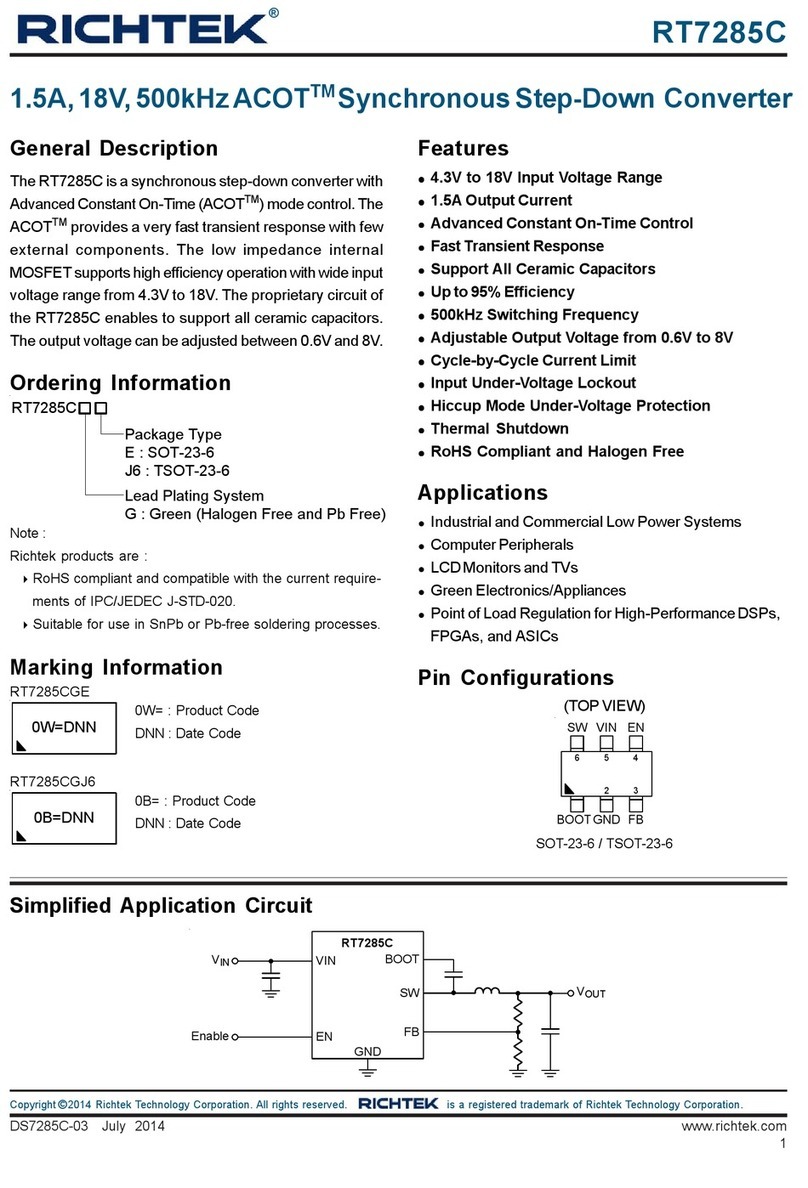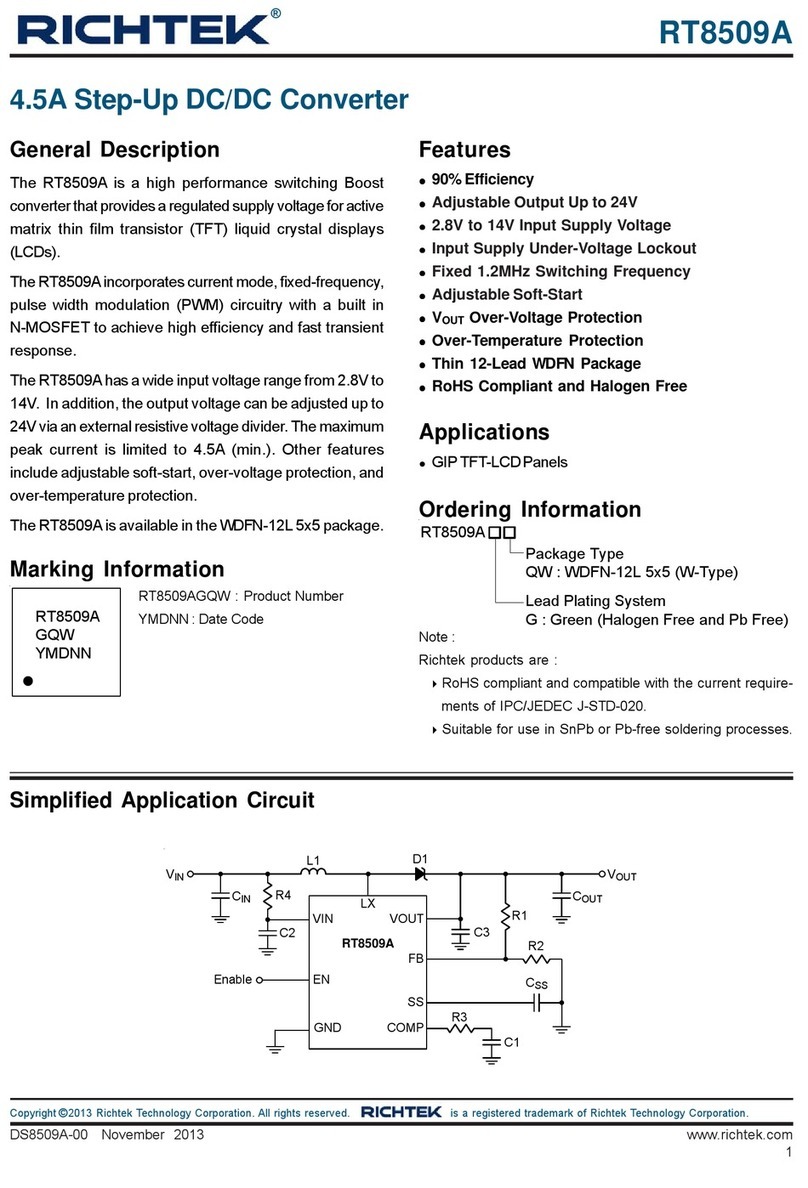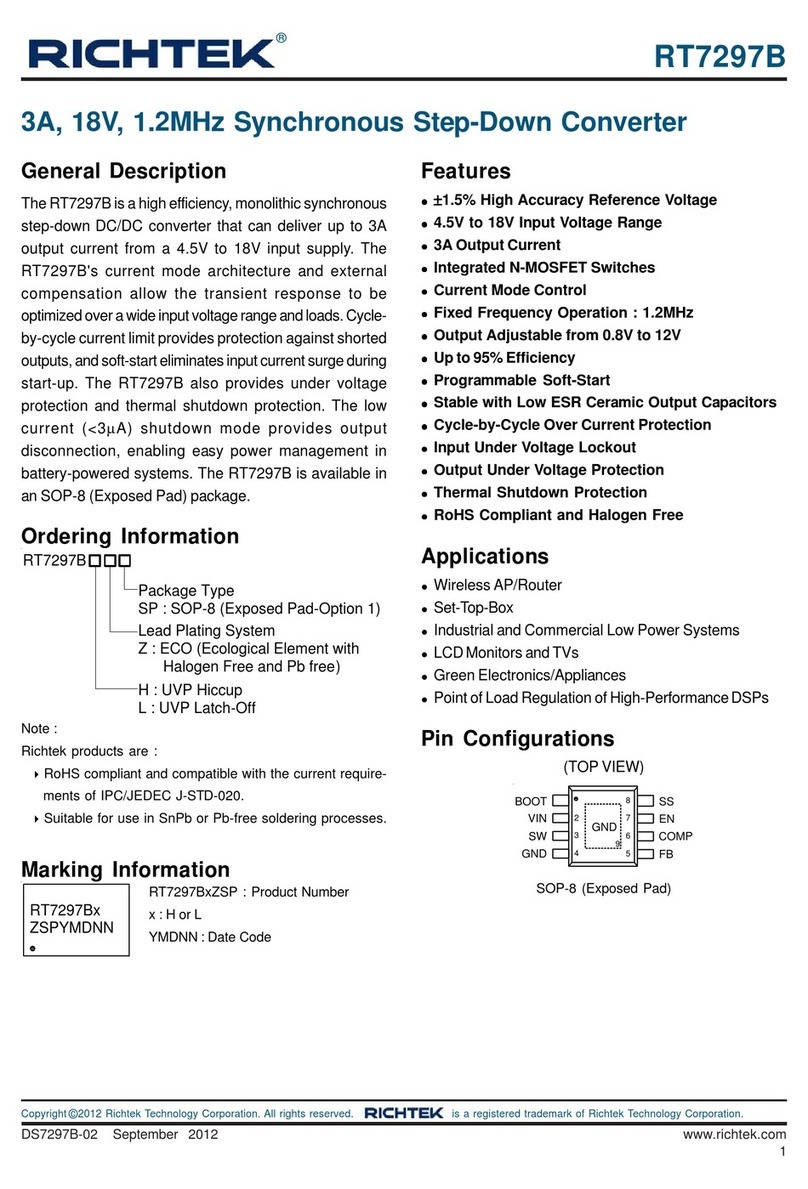RT7247A
10 DS7247A-03 October 2016www.richtek.com
©
Copyright 2016 Richtek Technology Corporation. All rights reserved. is a registered trademark of Richtek Technology Corporation.
Application Information
Output Voltage Setting
TheresistivedividerallowstheFBpin to sense the output
voltage as shown in Figure 1.
Figure 1. Output Voltage Setting
The output voltage is set by an external resistive voltage
divideraccordingto the followingequation:
OUT REF R1
V =V 1
R2
Where VREF is the reference voltage (0.8V typ.).
External Bootstrap Diode
Connecta0.1μFlowESRceramic capacitor between the
BOOT pin and SW pin. This capacitor provides the gate
drivervoltageforthehighsideMOSFET.
It is recommended to add an external bootstrap diode
between an external 5V and BOOT pin for efficiency
improvementwheninputvoltageis lowerthan5.5Vorduty
ratio is higher than 65% .The bootstrap diode can be a
low cost one such as IN4148 or BAT54. The external 5V
can be a 5V fixed input from system or a 5V output of the
RT7247A. Note that the external boot voltage must be
lowerthan 5.5V
Figure 2. External BootstrapDiode
Chip Enable Operation
The EN pin is the chip enable input. Pulling the EN pin
low (<0.4V) will shut down the device. During shutdown
mode,theRT7247A quiescentcurrentdropstolower than
3μA.Driving the ENpin high (>2V, <18V) will turn on the
device again. For external timing control, the ENpin can
also be externally pulled high by adding a REN resistor
and CEN capacitor from theVINpin (see Figure 3).
Soft-Start
The RT7247A provides soft-start function. The soft-start
function is used to prevent large inrush current while
converter is being powered-up. The soft-start timing can
beprogrammedbytheexternalcapacitorbetweenSSand
GND. An internal current source ISS (6μA) charges an
external capacitor to build a soft-start ramp voltage. The
VFB voltagewilltracktheinternalramp voltage duringsoft-
start interval. The typical soft start time is calculated as
follows :
SS
SS SS
SS
0.8 C
Soft-Start time t = , if C capacitor
I0.8 0.1
is 0.1 F, then soft-start time = 13.5ms
6
≒
An external MOSFET can be added to implement digital
controlontheENpin when nosystemvoltageabove2.5V
is available, as shown in Figure 4. In this case, a 100kΩ
pull-up resistor, REN, is connected between VIN and the
EN pin. MOSFET Q1 will be under logic control to pull
down the EN pin.
Figure3.EnableTimingControl
Figure 4.Digital Enable Control Circuit
RT7247A
GND
FB
R1
R2
VOUT
SW
BOOT
5V
RT7247A 100nF
RT7247A
EN
GND
VIN REN
CEN
EN
RT7247A
EN
GND
100k
VIN
REN
Q1
EN






























